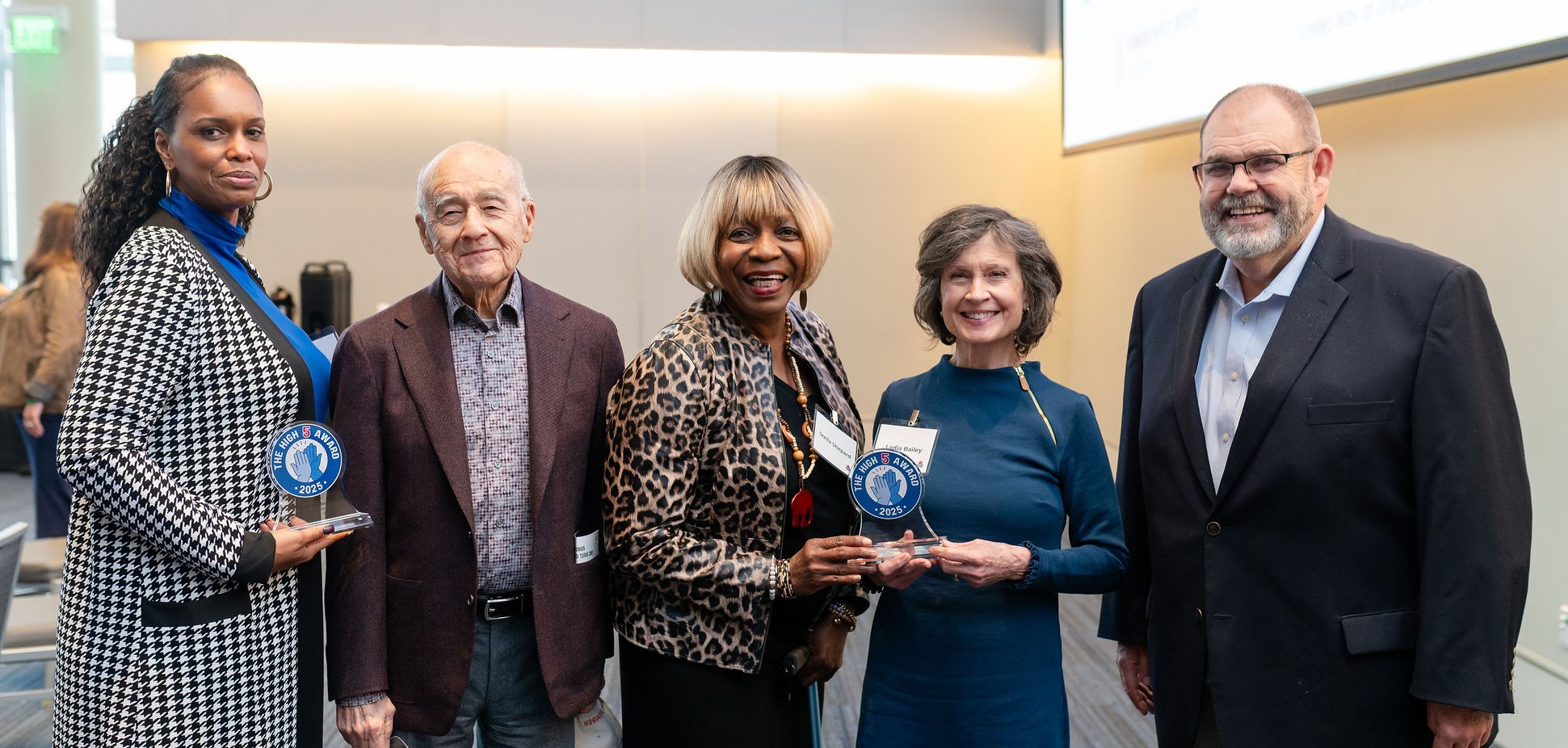Key Takeaways
- The Joint Medicaid Oversight Committee (JMOC) of Ohio’s 135th General Assembly held a meeting at the Ohio Statehouse in Columbus, Ohio on October 19, 2023, where the Medicaid Unwinding process was covered, providing a historical perspective of unwinding.
- During the meeting, Thomas Aldridge, Manager, Associate Practice Area Director, and Peter Cheesman, Manager, from Public Consulting Group LLC (PCG), a contracted entity for ODM, provided an overview of the contracted services they provide in general and to ODM.
- ODM has a central processing unit that supports counties that need additional assistance to manage their caseloads.
- If individuals do not return a Medicaid renewal packet, they are not automatically terminated.
- Medicaid is using a number of bots to make the unwinding process more efficient; renewals and address updates are common and successful uses.
The Joint Medicaid Oversight Committee (JMOC) of Ohio’s 135th General Assembly held a meeting at the Ohio Statehouse in Columbus, Ohio on October 19, 2023. During the meeting, the Medicaid Unwinding process was covered, providing a historical perspective of unwinding. There was also a review of data from the Ohio Department of Medicaid (ODM), along with reference to a state-by-state comparison.
Ohio Department of Medicaid and other state processes
Thomas Aldridge, Manager, Associate Practice Area Director, and Peter Cheesman, Manager, from Public Consulting Group LLC (PCG), a contracted entity for ODM, began the meeting by giving an overview of the contracted services they provide in general and to ODM. PCG described “relationships” with other states including Texas, Nevada, Alaska, and Louisiana. The type of services that PCG provides to these states varies from non-ex parte data services to data services for both income eligibility decisions and renewal decisions to use of a standalone eligibility data hub. PCG described how 33 states access some form of data from this hub to inform “efficient eligibility systems.”
Data and eligibility
During questioning, Representative Beth Liston asked PCG how the data was collected. PCG described a list of partners for data collection, including TransUnion, Experian, and a firm called EmpInfo, Inc. Additionally, PCG uses Paystub data, employment proof, and income estimation data. PCG uses such data from applications for cell phones, where self-proof is provided of income when determining “likely eligibles” or “likely ineligibles.” PCG described how, in Ohio, if someone does not return the eligibility packet, they only have an upstream role. Rep. Liston questioned this. Prior to a person’s enrollment date, PCG is running the data. The data is visible by the time the person is up for renewal between 30-60 days ahead of time.
Managing the incentive to maintain eligibility
As it relates to its use of employer records and proof of employment records, PCG used an example of someone with Medicaid going into an Apple Store and being incentivized to take an iPhone home with them, so they are “incentivized to tell Apple I have a job here in town and I make this much money, so you can trust that I will pay this back over the course of this next year…the same thing with lenders.” PCG aggregates proof of employment from lenders into its system. PCG also uses income estimation data. Experian looks at how much money people are spending each month, how much money they are borrowing, if they are current on their bills. PCG described this as a “clue” for either passage or for an ODM worker to “dig a little deeper” and/or question the Medicaid recipient due to potential ineligibility. Rep. Liston had a question about this. “…You can imagine someone saying they do more than they do in order to buy that cell phone or get that financing, so you can imagine… that is an interesting space.” PCG stated that they can produce granular reports regarding what is happening with those being procedurally disenrolled but did not have this data “at [their] fingertips” during JMOC. A representative from PCG mentioned that PCG worked together with ODM in a very collaborative relationship but reiterated that the role PCG plays is “upstream,” so the information regarding those disenrolled is largely standing with ODM. In the aggregate, kids are being disenrolled at a higher proportion than adults. PCG maintained that ODM and PCG have set up a process that looks at each individual person.
Ohio has one of the lowest procedural disenrollment rates
The Ohio Department of Medicaid (ODM) was next to present. Patrick Beatty discussed how, nationally, Ohio has one of the lowest procedural disenrollment rates, or the number of people disenrolled due to paperwork or process failures. Beatty discussed the procedural disenrollment rate for children as being lower than that for adults. He then went on to discuss disenrollments in greater detail. According to Beatty, the first cohort started with individuals who had an eligibility review date in April 2023. ODM started the review of that cohort in February. It is roughly a 2.5-month process. Beatty provided both a formal and informal definition of ex parte. The formal definition of ex parte is “A determination of eligibility based upon reliable verified information contained in the eligibility case file or other current information available to the agency, including information accessed through electronic data sources.” Beatty informally described ex parte as simply meaning that “the state agency or the delegated state agency, and in this case, the County Department of Job and Family Services (CDJFS) do the actual eligibility determinations, making a determination either by the system doing it or manually through a county case worker review.” He stated that ODM does both manual and automated ex parte.
Ex parte is “A determination of eligibility based upon reliable verified information contained in the eligibility case file or other current information available to the agency, including information accessed through electronic data sources.”
Two forms of Medicaid renewal processes
Beatty described two types of ex parte: (1) Automated ex parte and (2) Manual ex parte. Beatty says the electronic (or automatic) ex parte process is where the PCG tool comes into effect “in a way that has been utilized in this state more effectively than any other state.” All cases due for renewal each month are evaluated by the process. The renewal process begins two months prior to an individual’s eligibility date. Ohio’s passive renewal or ex parte process runs two months prior to the renewal due dates. As of October 19, 2023, ODM had either completed or commenced review of over 2.1 million people in the Medicaid program out of 3.5 million. Beatty describes the three-year process that involved three core components:
- Communications
- Automation
- County monitoring in supports
ODM uses an automated text reminder system and robocalls
Beatty mentioned that Managed Care Organizations (MCOs) have done outreach to members. In addition, Beatty described how there was webpage development and partner packets made by community-based organizations throughout Ohio. ODM also utilized technology, called ProComm, which is Ohio’s automated reminder texting system, which sends automated texts to members and updates member addresses in Ohio Benefits from the information received via response texts. The system contacts individuals assigned to receive a renewal packet prior to receipt and can update an address in the benefits system before it is sent out to the recipient. Beatty described continued communication to Medicaid enrollees through community-based organizations and the Ohio Food Banks. Beatty also reviewed how ODM accessed and utilized PCG third party data systems. Automated voice and phone functions are common as well. Interactive Voice Response System (IVR) is an automated system that sends automated reminder calls to members. The IVR system makes automated outbound calls to any individual who is up for renewal and receiving a renewal packet.
Ohio Department of Medicaid uses bots for renewals and address management
Beatty then went on to describe ODM’s usage of bots.
- The “Fast Lane” bot takes an individual who is recertified for SNAP and automatically renews the corresponding Medicaid case. The “Fast Lane” bot also conducts nightly sweeps to identify any SNAP re-certifications with a corresponding Medicaid case (COVID-19 Public Health Emergency (PHE) Unwinding Section 1902(e)(14)(A)).
- The “Renewal Received” bot was described as critical to having a successful platform to address the individual ex parte renewal process, as it prevents the individual from being terminated even if a packet is not returned.
- The “Address” bot was said to have addresses supplied by a variety of different sources, including managed care plans “as well as other sources,” and automatically updates the address in the Ohio benefits system.
ODM has a central processing unit that supports counties that need additional assistance to manage their caseloads. If individuals do not return a packet, they are not automatically terminated. This is where ODM’s use of bots comes into use. The bots process information, which then produces a readout of who is likely ineligible for Medicaid. The bot then takes sends those individuals’ data to county case workers for “full review,” according to Beatty. It is a three-tiered process of eligible, likely eligible, likely ineligible. The eligible list of individuals is sent to the “Renewal Received” bot. These are a list of individuals who have a higher probability of being eligible for Medicaid benefits. The bot then takes the list of individuals, and goes into the Ohio benefits system, and moves them forward to a county case worker for full review. If these individuals do not respond or do not return a renewal packet, they are not terminated. For the eligible Medicaid enrollees, the renewal received bot is engaged and the caseworker attempts manual ex parte renewal of data. The pre-populated form data includes individuals who sent in a form, though it is not the total number of those individuals who were actually renewed through manual ex parte using the PCG system. That number is 33 percent. A “significant” number of individuals do not send in a renewal packet.
Some likely-eligible applications need manual review
The rest of the individuals in the system not returned as having a higher probability of being eligible for Medicaid benefits, as determined by sufficient information collected by the bot, are returned to a county case worker based on the data available in the benefits system or the PCG system, as the information is not sufficient to make an ex parte renewal. For those cases, a county case worker would require or need additional information from an individual. If the individual responds with a renewal packet, the county case worker renews it and makes a determination of eligible or not eligible at the individual level. If the individual does not respond with a renewal packet, and the information in the renewal system and the information in the PCG data is not sufficient to do an ex parte determination, the case cannot be renewed. These cases result in procedural determinations. ODM presented information on July 2023 Renewals as an overview of a monthly cohort. Automatic ex parte renewals in July were about 40 percent.
- Out of July’s monthly cohort, county caseworkers found about 5 percent of Medicaid enrollees ineligible
- About 19 percent of terminations in July were due to procedural reasons
- Of that 19 percent, 10 percent were due to “Likely ineligible,” and 9 percent were due to no response to a renewal packet request
About 28 percent of the Medicaid population up for renewal in Ohio were part of the manual ex parte or pre-populated renewal forms process. This is the process that is a combination of a review from third-party data sources, where PCG’s Instant Eligibility Verification System (IEVS) analyzes and sorts fallout cases, and then cases are identified as eligible, likely eligible, and likely ineligible. Those who are deemed likely eligible or likely ineligible after the PCG IEVS review are sent renewal packets.
Unwinding numbers
Next, the Ohio Department of Medicaid Director, Maureen M. Corcoran, discussed trends and the fiscal impact of Medicaid Unwinding. She cited the Kaiser Family Foundation Tracker for Ohio. Director Corcoran discussed how HB 33, which was passed by the 135th General Assembly, in 2023, was based on a reduction of Medicaid enrollees by 48 percent. She stated that through September, ODM had a net decline of 251,000, which represents 31 percent of the increase that occurred from the “low point” of the pandemic. The fiscal impact since the budget passed is lower than what was projected, according to Director Corcoran. Director Corcoran describes this as a net result based on caseload of 77.7 million under projection based on caseload from July, August, and September. 1.3 percent under projection to date which is about 77.7 million dollars.
There was a roughly 800,000-person increase in enrollees during the pandemic.
There was a roughly 800,000-person increase in enrollees during the pandemic. Director Corcoran described how HB 33 was based on the assumption that from May until October 2024, there would be a 390,000-person reduction in Medicaid enrollees, which is roughly 48 percent of the 800,000 or so enrollees who joined Medicaid from the low point to the peak in enrollment during the pandemic. From February 2020 through April 2023, Director Corcoran described the peak beginning in April 2023, the total increase, or the peak, was 803,150 (about a 29 percent increase above ODM’s pre-pandemic enrollment).
Backlogs, churn and children’s disenrollment
Representative Cecil Thomas asked, “Do the counties still have backlogs for Medicaid?” Rep. Thomas described this backlog as warranting national attention prior to COVID. Director Corcoran replied, there is “a little bit” of a residual from month to month. She described how ODM tracks these metrics month by month and reports them to the Centers for Medicare & Medicaid Services (CMS). Rep. Liston asked, “Why are our current caseloads under [below the budgeted] projection?” She positioned this question with consideration that the budget projections included disenrollments. Director Corcoran stated, “We’re in this completely unchartered territory.” Director Corcoran stated that her observations were that ODM is doing a more effective job than most states. The data does not yet reflect a solid understanding of the total churn. ODM is just starting to see people coming back onto Medicaid, post-disenrollment. Even with these data points, many individuals may be retroactively reenrolled based on what happens within a two-to-three-month lag. “So, there’s that qualifier,” stated Director Corcoran, who suggested that the accuracy of the churn is currently between 1-3 percent of the caseload. Rep. Liston asked about what was described as the disproportionate enrollment of children disenrolled in the case report in September as a percentage of children enrolled in the program overall. Rep. Liston expressed concern about the ratios not being congruent with what was presented in the data. Rep. Liston described an overall decrease in childhood enrollment (per the report shared by Beatty) being higher for children than overall in July, August, and September.
Increasing efficiency and accuracy of eligibility
Beatty deferred to Dr. Matt Stearmer, Chief Data Officer at Ohio Department of Medicaid. Dr. Stearmer walked through a description of how the numbers presented in the aggregate do not consider any retroactive changes, though he stated, “I do not have that specific number [caseload report that Rep. Liston mentioned] before me.” Dr. Stearmer asked if it would be helpful to create a crosswalk report between the aggregate data and the caseload report to explain how the two might be correlated together, as he was not sure how to clarify without seeing the data in front of him. Rep. Liston stated that would be helpful. Representative Jennifer Gross expressed dismay that ODM is not disenrolling Medicaid enrollees sooner. She cited authorizing $30 million to begin the Medicaid Unwinding process and questioned whether it began in February. Director Corcoran confirmed that the process began in February and reviewed the process again with Rep. Gross. Director Corcoran stated that the ex parte system can only tell you if someone is eligible. The ex parte process cannot tell you who is ineligible. JMOC Vice-Chair, Senator Mark Romanchuk, stated, “Our goal, probably should be to eliminate the third party.” Senator Romanchuk went on to add that “[He] would like our system to get better at what it does so that we don’t necessarily need a third party.” Senator Romanchuk described the rate of ex parte review as being “low” in his view.








